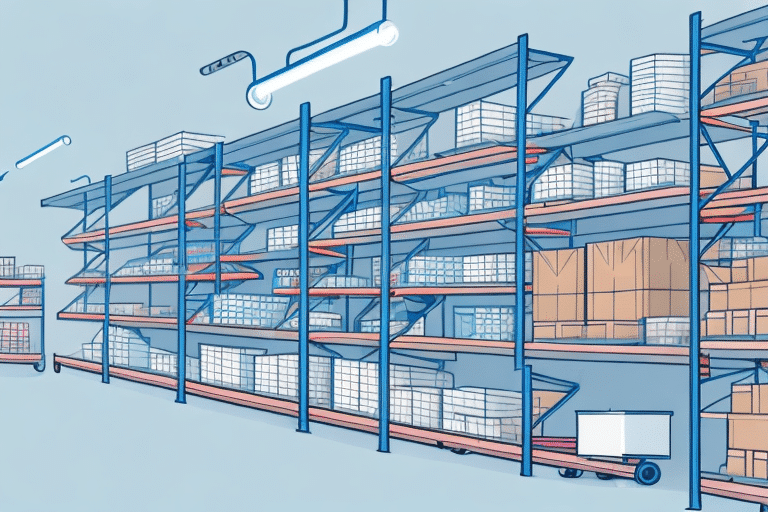Importance of Efficient Inventory Transfers
Efficient inventory management is a cornerstone of successful business operations. Effective inventory transfers ensure that products are available where and when they are needed, leading to increased productivity, higher customer satisfaction, and improved revenue. Efficient transfers minimize downtime, reduce holding costs, and enhance the overall responsiveness of the supply chain.
Understanding the Significance
Inventory transfers involve moving goods from one location to another, such as replenishing store shelves, relocating products to a new warehouse, or fulfilling orders from alternative sites. The efficiency of these transfers directly impacts a company's ability to meet customer demands promptly, control costs, and maintain a positive reputation.
According to a study by Investopedia, businesses with optimized inventory transfer processes experience up to a 20% increase in operational efficiency. Implementing advanced tracking and management systems can significantly reduce errors and delays, contributing to smoother operations.
Common Challenges in Inventory Transfers
Despite its importance, inventory transfers present several challenges that can hinder efficiency. Key issues include delays in transfer processes, damages or losses of goods during transit, inaccurate inventory counts, and high holding costs. These challenges often stem from inadequate infrastructure, poor communication, and reliance on outdated systems.
Risks of Theft and Fraud
One significant challenge is the risk of theft or fraud during inventory transfers. When products move between locations or involve multiple handling parties, the chances of unauthorized access or misappropriation increase. Implementing robust security measures, such as background checks for employees and secure transportation protocols, is essential to mitigate these risks.
According to the National Fraud Review, businesses lose billions annually due to inventory theft and fraud, highlighting the need for stringent security practices.
Analyzing and Optimizing Your Transfer Process
To enhance the efficiency of inventory transfers, it's crucial to conduct a thorough analysis of the current transfer processes. This involves identifying bottlenecks, assessing the frequency of transfers, and evaluating the accuracy of inventory data.
Identifying Bottlenecks and Inefficiencies
Common bottlenecks include unclear transfer procedures, inadequate communication channels, limited workforce skills, and outdated technology. Mapping out the entire transfer process through flow diagrams and gathering feedback from involved staff can help pinpoint these inefficiencies.
- Assess current transfer frequency to balance workflow disruptions and stock availability.
- Utilize data analytics to monitor transfer times and error rates.
- Regularly review and update transfer protocols to adapt to evolving operational needs.
Leveraging Data Analytics
Data analytics tools can provide valuable insights into inventory transfer performance. By analyzing metrics such as transfer time, accuracy, and costs, businesses can make informed decisions to optimize their processes. For instance, predictive analytics can forecast demand trends, helping to adjust inventory levels proactively.
According to a report by Gartner, the data analytics market is expected to grow by 28% in 2022, underscoring its importance in supply chain optimization.
Enhancing Transfer Accuracy and Speed
Improving the accuracy and speed of inventory transfers is fundamental to operational efficiency. Implementing automation technologies, selecting reliable carriers, and ensuring precise labeling are pivotal steps in this process.
Adopting Automation Systems
Automation systems, such as barcode scanning and inventory management software, reduce the risk of human errors and accelerate the transfer process. These systems provide real-time tracking and accurate inventory counts, facilitating smoother operations.
- Barcode Scanning: Enhances accuracy in tracking inventory movements.
- Inventory Management Software: Streamlines data entry and provides real-time insights.
Research from Logistics Management highlights that businesses using automated systems see a 30% reduction in transfer errors.
Implementing Real-Time Tracking
Real-time tracking systems offer continuous visibility into the location and status of inventory during transfers. This allows businesses to monitor progress, identify potential delays, and address issues promptly.
According to a study by Supply Chain Digital, companies utilizing real-time tracking report a 25% improvement in on-time delivery rates.
Establishing Standard Procedures and Staff Training
Standardizing transfer procedures and providing comprehensive training to staff are critical for maintaining consistency and efficiency in inventory transfers.
Creating Standard Operating Procedures (SOPs)
Documenting clear and detailed SOPs ensures that all departments and stakeholders are aligned on the transfer processes. SOPs minimize the risk of errors and delays by providing a consistent framework for inventory movements.
- Define each step of the transfer process clearly.
- Assign specific roles and responsibilities to team members.
- Establish protocols for handling exceptions and emergencies.
Training Your Workforce
Regular training programs equip employees with the necessary skills and knowledge to execute inventory transfers efficiently. Training should cover proper handling techniques, accurate labeling, and the use of technology tools.
According to Training Magazine, companies that invest in employee training see a 24% increase in productivity.
Implementing Automated Inventory Management Systems
Automated inventory management systems play a pivotal role in modernizing inventory transfers. These systems integrate seamlessly with other business operations, providing a unified platform for managing inventory across multiple locations.
Benefits of Automation
Automated systems offer numerous advantages, including:
- Reduced Labor Costs: Automation decreases the need for manual data entry, leading to significant cost savings.
- Enhanced Security: Real-time tracking minimizes the risk of theft and loss.
- Improved Efficiency: Faster processing times enable more timely transfers.
Integration with Existing Systems
Integrating inventory management systems with existing manufacturing and supply chain software creates a cohesive and efficient transfer process. This integration allows for better coordination, data sharing, and decision-making based on comprehensive metrics.
According to Forbes, businesses that adopt integrated automated systems report a 35% improvement in inventory accuracy.
Tips for Successful Implementation of Streamlined Transfers
Implementing streamlined inventory transfer processes requires strategic planning and execution. Here are key tips to ensure successful implementation:
- Prioritize Solutions: Focus on solutions that are practical and applicable to your specific business operations.
- Involve Stakeholders: Engage all relevant departments and stakeholders to ensure buy-in and collaboration.
- Adopt Reliable Technology: Invest in up-to-date and reliable technology infrastructure to support efficient transfers.
- Foster a Culture of Continuous Improvement: Encourage ongoing assessment and refinement of transfer processes to adapt to changing needs.
Successful implementation hinges on the collective efforts of all teams involved, from operations to management. By following these tips, businesses can achieve a streamlined and efficient inventory transfer system that enhances overall performance.
Conclusion
Streamlining inventory transfer processes is essential for maximizing efficiency in inventory management. By identifying and addressing bottlenecks, leveraging automation and data analytics, establishing standardized procedures, and ensuring comprehensive staff training, businesses can significantly enhance their transfer operations. These improvements lead to reduced costs, increased accuracy, faster order fulfillment, and greater customer satisfaction. Embracing continuous improvement and adopting advanced technologies will ensure that inventory transfers remain efficient and effective, driving long-term business success.




















